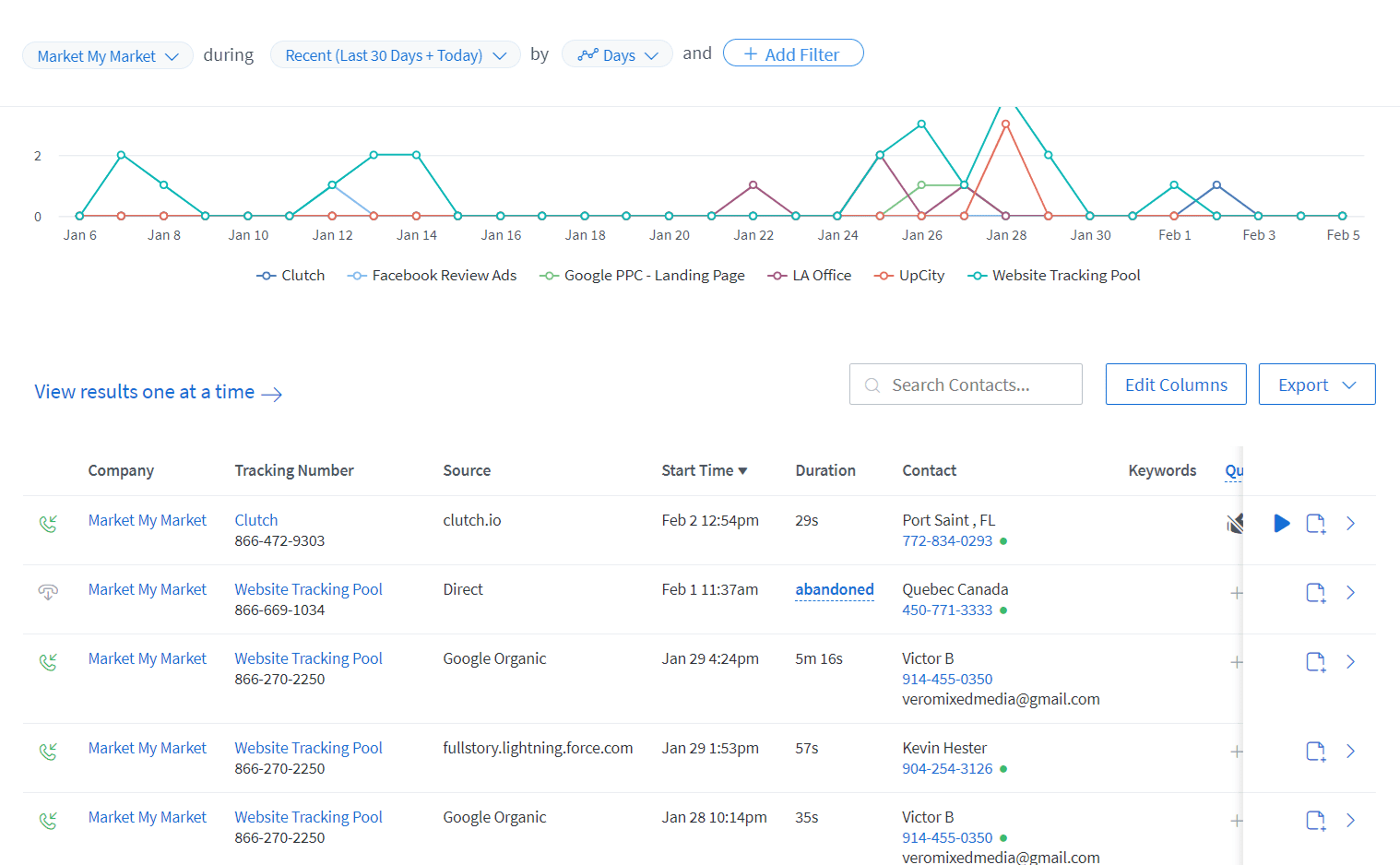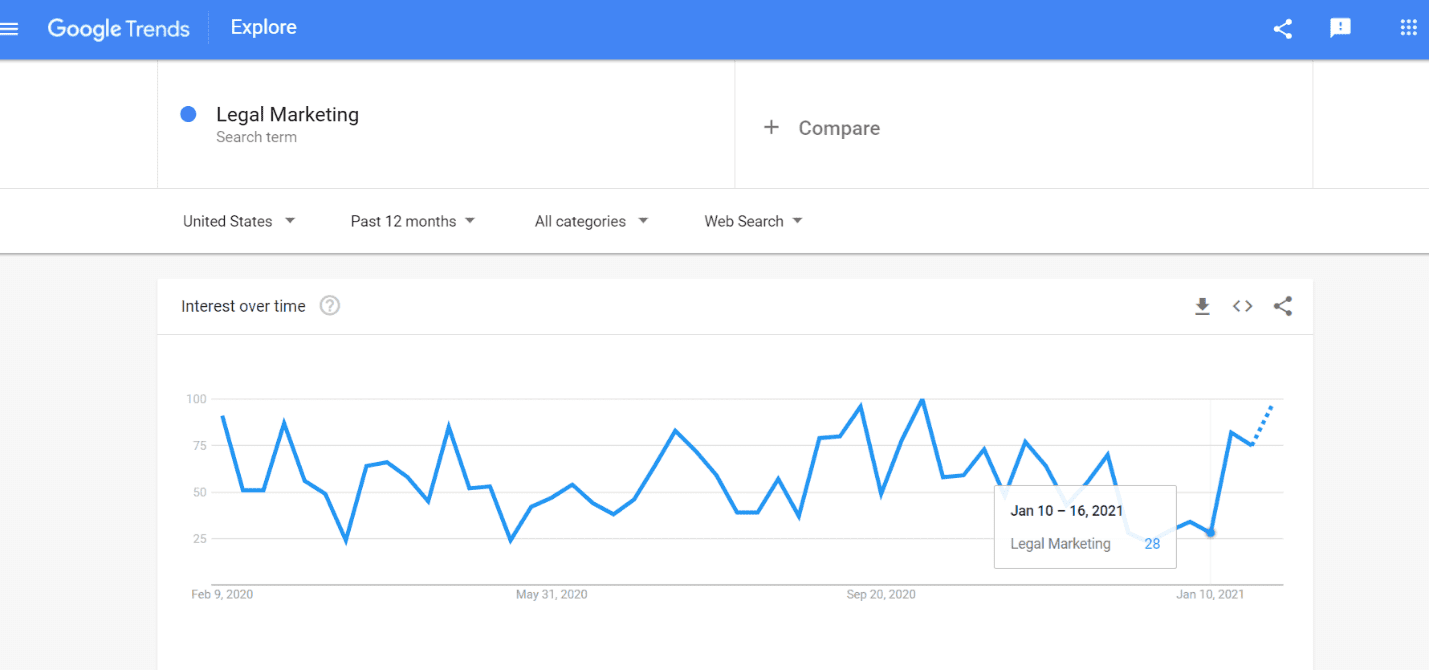Even in 2021, I’m still seeing SEOs keep their tricks and techniques hidden from those not willing to pay for the information. I’ve been participating in the SEO world for ten years now, and I can confirm that optimization isn’t anything secretive, elusive, or overly complicated. Instead, it can be boiled down to an extended checklist of best practices that need to be executed at 100 percent. Some are simple, others are technical, but they’re all transparent, accessible, and measurable.
At the end of the day, business owners that work with digital marketing companies—especially those offering SEO—are mostly concerned about leads. A part of being transparent is also confirming with certainty that an increase in business is attributed to appropriate sources. For example, there may be an uptick in leads several months into working with a new SEO agency, but is that upsurge a result of their efforts or is it because you happen to be on the local news or because you started a Facebook campaign at the same time?
Want Audio? Here is a link to the podcast:
https://legalmastermindpodcast.com/ep-91-chase-williams-and-ryan-klein-the-transparency-of-marketing/
What Behaviors and Responses Frustrate Clients the Most?
 For the past several years, we’ve had the tools and resources to seamlessly provide transparency from every angle of a digital marketing campaign, most of which can be automated. From A to Z and from the top of the funnel to the bottom, agencies have this data to provide to clients. When this information isn’t conveyed, the agency is likely suffering from a lack of time or desire to be transparent. I know from personal experience that businesses are often frustrated by the following behaviors and responses:
For the past several years, we’ve had the tools and resources to seamlessly provide transparency from every angle of a digital marketing campaign, most of which can be automated. From A to Z and from the top of the funnel to the bottom, agencies have this data to provide to clients. When this information isn’t conveyed, the agency is likely suffering from a lack of time or desire to be transparent. I know from personal experience that businesses are often frustrated by the following behaviors and responses:
- Not knowing what their agency is doing on a weekly or monthly basis: Sometimes, the only noticeable work that’s apparent from a client’s perspective is content and reporting. In reality, however, there’s often other less outwardly tangible work being done.
- Too much of an emphasis on KPIs (Key Performance Indicators): KPIs are often indicators of campaign trajectory and potential success, not necessarily success itself. Other metrics are often considered like leads and signups.
- Grouping all leads together: Rather than combining all leads together, they’re broken up by specific campaigns or even specific parts of the website.
- Getting pushback when requesting additional information: Clients are often unsatisfied by responses like “it’s proprietary” for changes to the website and link building strategies. Likewise, frustration can build when the subject matter is brushed off with comments like “it’s a lot of coding.”
What to Consider if Your Digital Marketing Campaign Isn’t Working
We’ve broken down the most common gaps in a clear and transparent digital marketing campaign as well as the steps you can take to uncover additional insight if you find yourself with vendors that aren’t forthcoming with the progress of your digital marketing efforts.
Leads and Attribution – Forms, Calls, Chat?
It’s important to consider how many ways potential clients have to contact you. When you have leads coming in from forms, calls, chat, and even texts, you may want to find a way to differentiate the medium used to contact you including the source and even the device (mobile vs. desktop). For instance, if you’re receiving mostly form and chat submissions on desktop, your site may be too difficult to navigate on a cell phone.
Having implementation of attribution for your leads is fundamental to tracking and transparency. Perhaps most importantly, you should consider finding a way to confidently have the correct attribution for all your lead channels preemptively, meaning that you won’t have to rely on your intake team to ask “How did you find out about us?” Instead, this can be all automated with 99.9 percent confidence. The marketing channels that need attribution include the following:
- Organic/SEO
- Local/GMB
- Referral
- Direct
- Word of Mouth
- Print/TV/Billboards/numerous non-digital
- Retargeting
- Social
- Geo-fencing
- PPC/Google Ads
- Legal Directories
Fortunately, this can be all tracked without an overwhelming amount of effort.
Forms and Calls – CallRail
There are many options for call tracking, mostly with the use of vanity numbers. However, information and coordination often involve cumbersome reports and manually exported data. Instead, consider CallRail, which has become MMM’s go-to for tracking numbers. The metrics provide us with best-in-class insight that includes first-time callers, call duration, source of the call, and call tracking. CallRail has also introduced form tracking, which can be placed on your website to further house all your lead tracking data in one place.


There are numerous vendors we work with to support our chat-related efforts including Apex, Ngage, Juvo, Drift, Zyra, and more. The majority of these businesses are transparent about the referral path—the URL string that led them to your site—and the page on the website from which they came. This can help confirm if your content efforts are resulting in the conversions you’re seeking.
Traffic, Narrowed by Channels
Often, you’ll see your website traffic grouped together in the same way as your leads. Fortunately, Google Analytics makes this much easier to break down by channels.

Google Analytics is extremely useful because you can distinguish your own channels by including certain parameters. If you’re running a sponsored content campaign, you can specifically create a channel for traffic coming from designated URLs.
You can even set up custom channels so that your attribution isn’t simply thrown together with another existing acquisition. For example, if your Google Ads campaign isn’t broken out into something like “paid” or its own specific channel named “Google Ads,” it could be grouped together with Organic Search, heavily inflating SEO numbers and perhaps creating misinformation among the team.
Backlinks and Ongoing Authority
Quite possibly the least discussed component of your marketing efforts are backlinks. Everyone’s philosophy on backlinking is different, but the end-goal is usually to confirm that your search engine rankings are consistently improving. You won’t necessarily need to gather in-depth backlinking reports unless your rankings haven’t improved at all.
If you ever want to take a peek under the hood of your backlinking strategy—whether it happens naturally or proactively from your marketing team—we recommend trying out tools like SEMRush (shown below), SpyFu, and Ahrefs.

Content Plans and Their Execution
From an SEO agency’s perspective, content is one of the few ongoing tasks that can be considered “tangible.” We’ve had conversations with hundreds of law firms over the past decade, and we often hear them communicate the idea that the only noticeable work that’s apparent from a client’s perspective is content.
SEO is definitely positioned as a “behind the scenes” marketing endeavor, but your content plan can very well be less than half of what goes into a scope of work on a monthly basis. Nevertheless, there are ways of keeping writers and marketers accountable for the content they write.


From a blogging standpoint, make that it’s clear when content is being added to the website by regularly checking your blog. The last post date should be included with the post. As for other forms of content that are normally added on an ongoing basis like pages and articles, taking a look at your website’s sitemap should be easy.
You can find your website’s sitemap by typing in your domain name and appending either sitemap.xml, sitemap.html, or sitemap_index.xml. For instance, your sitemaps should look something like this: “example.com/sitemap.xml.” On your sitemap, you’ll see lists of content on your website breaking it down by the pages and posts most recently updated. Your sitemap should give you an idea of when the content was added to the website and when it was last amended.
Alternatively, looking at an increase in submitted and indexed pages and posts on your website by going into Google Search Console is also helpful if you want to understand how content is consistently being added to your website.

Ongoing On-Page Changes to Website
This may hinge more on being obsessive for accountability rather than transparency, but many marketers may claim to make hundreds of on-page changes over dozens of hours of work, and if you’re paying by the hour, this can add up. When changes are made to a website—whether aesthetic for design or SEO for optimization—there are a number of vital changes that could be difficult to discern to the untrained eye. Taking a look at a plugin that you can give your webmaster to have some transparency may be important if you’ve been burned in the past. Try WPBeginner to start.
Local Results and GMB Metrics
Google My Business has come a long way in providing robust information about what’s coming in from a local standpoint. Below is a common chart that will help you see your individual insights for a GMB location, with our most important metric being “Calls.” The visits on your site can also be tracked via Google Analytics, and you could even circle back and make a custom channel called “GMB” if you don’t want to pool it together.

Did you notice the “Message You” note? It’s important to keep in mind that GMB changes more than nearly any other Google product, and enabling the message feature may present a great opportunity for your business.
Keywords: The Most Subjective KPI in Digital Marketing
If you’re interested, consider listening to our podcast episode about transparency and keywords on the Legal Mastermind Podcast. You’ll hear a 15-minute tirade about the over-emphasis on keywords from many marketers and agencies. Keywords are an important KPI, but ultimately not the final measure of success in your campaign. This is because keywords may have volume and impact one market, but may be marginal in another.
Likewise, the keywords that bring in traffic to your website may not convert because of poor UX, branding, messaging, call-to-action, website load speed, and more. Therefore, while measuring keywords is an important part of any campaign, it by no means is the end-all-be-all metric to determine your marketing success.
People may find your services by typing in hundreds or even thousands of keywords. While we know your standard vanity keywords—like, for instance, “Houston Family Lawyer”—have an objectively positive impact, these phrases may end up being less than 10 percent of searches in any given market. Vanity keywords also have to compete with Google Ads because of the transparent bidding strategies targeting them. In 2021, consumers will have to go through LSAs, Google Ads, and Google Maps/GMB before getting to your organic result, which will be slightly less than a third of users on desktop, and even less on mobile.
That being said, the additional searches being conducted are sometimes impossible to track because of the number of variations. For instance, this variation could include the following:
- Geographic vanity search: “Houston family lawyer”
- Non-Geographic vanity search: “Family Lawyer,” where the searcher is relying on their device to know their location and provide relevant results
- Proximate vanity search: “Family lawyer near me,” “family lawyer by me,” “family lawyer close to me.” In this case, the searcher implicitly relies on their device to give finite, proximate results
- Qualified vanity search: “Best family lawyer,” “top family lawyer”
- Inquisitive, informational search: “Do I need a family lawyer for X?” “Should I get a family lawyer for X?”
- Inquisitive, actionable search: “Who is the best family lawyer in Houston?”
With the evolution of voice search, the use of numerous devices, and changes in search behavior, there is no sense in pigeonholing your campaign’s success to a handful of keywords. Instead, these keywords can be considered a measure of healthy visibility.

Showcasing Effectiveness of All Paid Campaigns
Fortunately, paid campaigns will provide you with transparency at every stage of the process. What you may want to request in an effort for further clarity is a breakdown of individual campaigns. For example, while you may see all your efforts grouped together in one report, there may be a few campaigns performing well and a couple of others that are underperforming. Breaking out campaigns and analyzing their individual results may assist in making decisions about increasing a budget for one campaign and removing funds for another.

Providing Ongoing Insight on Search Behavior Trends
Who wouldn’t want to know what’s in store for their campaigns in the months to come? Being transparent about your ongoing strategy—whether in periodic conversations or emails—perpetually keeps you looking ahead and new strategies and tactics planned on the horizon. We know without a doubt that what was working last year very likely won’t work at 100 percent this year, and your marketing vendors should be vocal about what they’re doing to stay ahead.

Manual Reporting and a Rolling Strategy
Last but not least, most vendor reporting is automated with little manual insight. No one is expecting a full analysis explaining every detail of your campaigns on a weekly basis, but some analysis and interpretation of data and statistics can go a long way in being able to remain proactive rather than reactive.
In addition, a clear picture of work being done over time certainly helps dispel any concerns about your vendors setting the campaign on autopilot and just collecting checks.
Contact the Specialists at Market My Market for Well-Defined Digital Marketing Strategies
Do you find yourself confused about the practices being executed by your marketing vendors? At Market My Market, we pride ourselves on being the most transparent, effective, and distinct agency for your business. To learn about how we can help catapult your website to the top of search engines while remaining unambiguous and communicative throughout the digital marketing process, contact us for a free consultation by completing our contact form.

MMM Author Ryan Klein
The ongoing digital revolution is transforming the way that all businesses interact with clients and customers. Consumers rely heavily on digital channels for researching products and services and expect to make buying choices with the swipe of a finger. For organizations that want to remain competitive, having a defined digital marketing strategy and execution plan is essential for successful outcomes. With a demonstrated history of creating and implementing strategic digital marketing initiatives that drive growth, I am committed to delivering real, measurable results for my clients.



